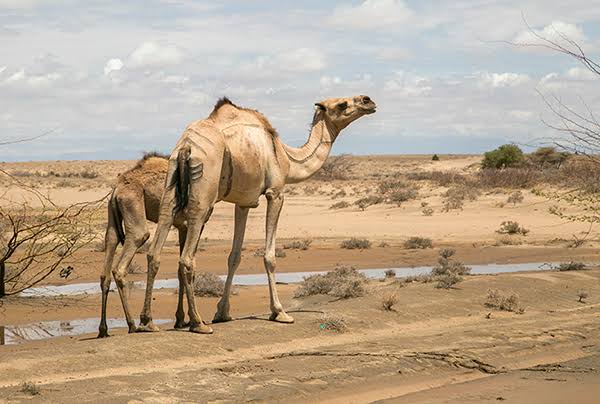NAIROBI, Kenya, Apr 12 – Public Service, Youth, and Gender Affairs Cabinet Secretary Prof. Margaret Kobia on Monday said that the number of counties battling the ongoing drought has increased to 28 with the majority being those in the Arid and Semi-Arid Lands (ASAL).
According to the government, 3.1 million Kenyans have so far been affected by the drought with Marsabit County being the most hit amidst efforts to combat the situation.
In the list of most affected counties, Baringo came in second followed by Isiolo, Mandera, Turkana, Wajir, and Kilifi counties.
Report further indicate that the situation is deteriorating in Taita Taveta, Makueni, and Tana River, while the situation is stabilizing in Kajiado, Narok, and Embu.
“If there is something that is giving President Uhuru Kenyatta sleepless nights, it is the drought situation we are witnessing in the country. Though as a government we have tried to address the situation, we are appealing to more partners to come on board. It will be very sad to see others die while you have plenty in your store,” said the CS.
Safaricom Chief Executive Peter Ndegwa said, “It is high time as a country we shifted from an emergency approach to a community development approach.”
Meru and Tharaka Nithi are classified to be in the alert stage, while the situation is said to be improving in Kitui and Kwale.
Kobia made the announcement while flagging off food donations worth Sh100 million to 20,000 households nationwide.
She pointed an accusing finger at the Meteorological department for not providing an accurate weather forecast, which is, in turn, is said to have ‘confused’ Kenyans who expected rains in April.
Last month the government cited that due to minor challenges experienced with emergency cash transfers affecting a few individuals in the targeted counties, it decided to re-introduce physical food distribution to all the counties as an emergency intervention to help the affected communities.
So far, the government has spent Sh1.2 billion on food aid and cash transfers for 380,000 people. Each beneficiary receives Sh3,000 as emergency relief.
The government says that it will roll out other long-term interventions including infrastructure development that will entail rehabilitation of weatherproof infrastructure, sustainable livelihoods that will entail the provision of vaccines for cattle, and an environment for economic activities.
Also, the government said the establishment of early warning systems in drought risk management will aid response interventions, the improvement of health and education facilities, and the enhancement of peace and security in some parts of the country that suffer tremendously during the drought period.
Want to send us a story? Contact Shahidi News Tel: +254115512797 (Mobile & WhatsApp)


